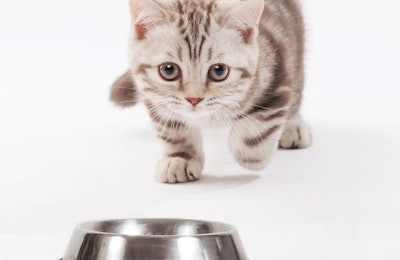
The last few pet retail trade shows I attended in person, before the world changed (i.e., the pandemic hit), I couldn’t help noticing the growing number of new cat food products entering the market. One notable example was Purina Pro Plan’s LiveClear, designed so people with allergies to cats could better tolerate living with them. That was just one among many new product launches for cats in recent years, including new companies and brands focused exclusively on cat food.
Which is a positive response to consumer demand, as research conducted by Packaged Facts, also before the pandemic (summer 2019), showed 44-51% of U.S. cat owners agreeing that product manufacturers and various retail channels treated cats as second-class citizens.
Or, as a headline in a new report from investment firm Cascadia Capital put it: “Cats are underserved.”
From a business and market perspective, that has made some sense, because dog ownership had been growing for the previous decade, compared to flat growth for cat ownership; and dog owners tended to spend more on their pets. While cats are all essentially about the same size, dog sizes vary much more, with some larger breeds approaching the size of miniature horses. Those dogs eat a lot more than cats do. In addition, dogs are much more likely to accompany their owners outside the house, creating a bigger market for leashes and collars, portable food and water receptacles and even portable consumables, like treats and dog food bars.
In fact, according to the American Pet Products Association’s (APPA) 2019-2020 National Pet Owners Survey, dog owners on average spent more than 50% higher annually on products and services for their pets, compared to the spending of cat owners.
But is all of this about to change?
Cat food market growth follows cat population growth
The APPA data was cited by Bryan Jaffe, managing director of Cascadia Capital, in its report, “Pet Industry Overview: Spring 2021.” His comments seemed to suggest that cats (and their owners) are starting to feel more love from the pet industry. “Marketers have increased their attention on felines as cat population growth shows more durability over time,” he wrote.
Jaffe also shared data from IRI showing that in most U.S. retail channels, the number of cat food and treat brands has increased from 213 in 2018 to 249 year to date in 2021. That includes dry cat food, wet food and treats. “The growing opportunity and increased focus on cats have prompted brands to enter the category,” the report said.
Such growth, and the durability of cat population increases mentioned by Jaffe, owes partially to the pandemic-driven rising pet adoption in the U.S. and other developed markets. In the U.S., the increase in adopted pets by current pet-owning households was nearly equally distributed between cats and dogs: 19% of such households adopted cats in the previous 12 months, according to a February 2021 survey from Packaged Facts, while 23% of the households added dogs. In terms of pet population growth among all U.S. households, cat ownership increased 5.1% in 2020.
Similar growth in pet ownership, including that of cats, has occurred in other markets globally. In some European countries, cats are more popular than dogs. For example, in Germany, cats comprise 52% of the pet population, with 15.7 million cats living in 26% of all German households, according to data released in April 2021 by WZF, organizers of Interzoo. That compares to 10.7 million dogs in 21% of households.
As a result, cat food holds the largest share of the German pet food market and also saw the highest growth in 2020, 5.3%. The cat treat segment increased 9.4%, WZF said, followed by wet cat food at 5% and dry at 2.7%.
Wet cat food on the rise
As in Germany and other markets, wet cat food is surging in the U.S., with the segment increasing in share of the overall cat food category since 2018, according to IRI data cited by Jaffe. In fact, as of April 2021, wet food has assumed the top spot among types of cat food, reaching 42.6%, compared to 41.3% for dry food. Treats now account for 16.1% of the cat consumables category.
While wet pet food overall has been gaining in popularity and sales, the segment seems to provide a particularly strong opportunity for innovation when it comes to cats. They often prefer wet food (with the exception of my resident furry weirdo, who won’t touch it); and because it’s high in water, the format offers a way to ensure cats are well hydrated. That high moisture content also helps with satiety, aiding in controlling intake for overweight or obese cats.
The downside of wet food (for any species) has traditionally been that many owners find metal cans inconvenient and messy to open and store in the fridge. Yet, again, innovation in the category is addressing that issue, too, as more brands offer wet cat food in convenient plastic trays, often in single-serving sizes, or in resealable tubs that can be warmed to room temperature, which many cats prefer.
Such innovation is likely to keep the wet cat food category, and cat food in general, on the upswing.
















